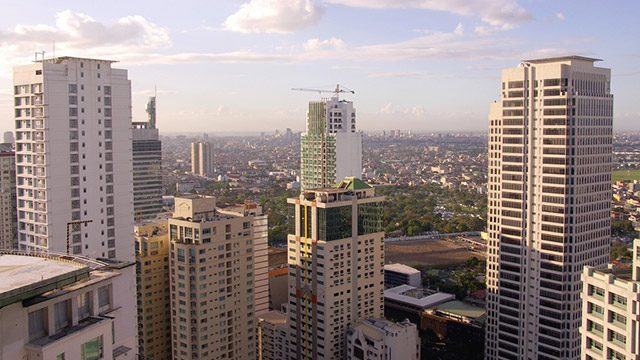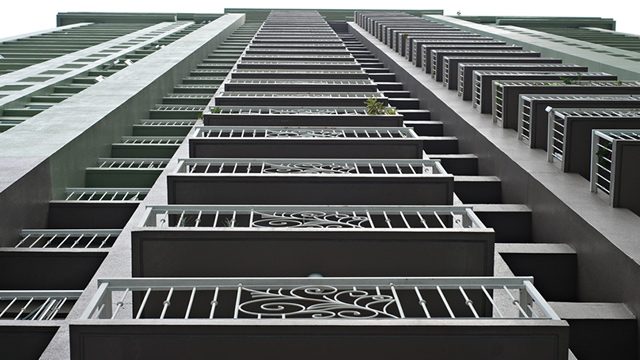SUMMARY
This is AI generated summarization, which may have errors. For context, always refer to the full article.

MANILA, Philippines – The Philippines’ property market is poised for “more robust” growth given “encouraging developments” in the economy, Socioeconomic Planning Secretary Arseniuo Balisacan said on Tuesday, July 28.
“Without a doubt, this is a great time for the Philippine property market,” Balisacan said at the 2015 summit of The Organization of Property Stakeholders Incorporated and Land Registration Authority.
He cited several factors to support his pronouncement: the country’s solid economic backdrop, stronger demand for business process outsourcing (BPO) services, heavy consumer spending, and the healthy inflow of remittances from overseas Filipinos.
“These encouraging developments in our economy bode well for our real estate industry, with the property market across all its sectors (including office, residential, logistics, retail, and hospitality segments) poised for continued growth,” he said.
He added: “The sector is seen to grow even more robustly, driven by the continued positive outlook on the economy and the projected expansion of outsourcing industry within the next 5 years.”
Balisacan noted that the property market has grown robustly over the last 20 years as increased demand for residential and commercial properties in the country became ever more evident against the backdrop of a changing economic landscape.
“The Philippines has emerged as one of the fastest-growing economies in the region in recent years. With an average growth rate of 6.2% per year from 2010 to 2014, even reaching 7.1% in 2013, we can proudly say that the Philippine economy is now traversing a higher growth trajectory path,” he said.

Rapid urbanization
Balisacan said a key source of growth in the Philippine property market is rapid urbanization and the accompanying rise of the residential sector.
As of 2010, a little under half of the Philippine population lived in urban areas at 48.6%. But this is projected to rise to 56.3% by 2030, and 66% by 2050.
“Condominiums are becoming particularly attractive in Metro Manila, with an estimated increase in supply of 14,000 units from 2012 to 2018, mostly coming from the mid-end segment of the market,” the NEDA chief said.
President Benigno Aquino III mentioned the growth of the property market in his last State of the Nation Address on Monday, July 27. He said even new hires can now afford to buy cars and condominium units.
Balisacan said that the demand for residential properties is mainly driven by the middle class, particularly the 11 million Filipinos overseas who in 2014 remitted about $24.3 billion, $7 billion of which went into property investments.
“The growth of ‘townships’ or self-contained districts that fuse together homes, offices, shops, and schools in linked communities, are particularly attractive not only to affluent buyers but also young professionals who choose to live near their workplaces,” Balisacan said.
Among the growing services sector, the country’s BPO industry is proving to be particularly important for the growth of the country’s property sector, he said. (READ: BPOs, office spaces keep real estate on the rise)
“Fueled by increased new investments from large and mid-sized foreign investors, our BPO sector has remained among Asia’s brightest spots over the years,” Balisacan said.
BPO services in the country started following the Asian financial crisis in 1997, when global companies began to outsource business processes that could be done outside the company, with greater efficiency and at less cost.
“From a $3.4 billion industry in 2006, the outsourcing industry is estimated to have reached $18 billion in 2014, and is forecast to accelerate further to about $22 billion in revenue for this year,” he said.
Promising area
The retail and hotel property markets are promising areas of real estate growth borne by the services sector, he said.
Balisacan said that a significant growth in the number of retail shopping malls, and a growing expansion and market share of malls located in the provinces, “suggest that by 2018 more than half of total retail property supplies will be found in the provinces.”
The growing tourism arrivals and receipts are also encouraging hotel developments in and out of Metro Manila, he said.
“In the next few years a significant number of these new hotel properties will be constructed particularly in the southern part of Metro Manila, including Visayas and Mindanao. Moreover, the emergence of new hotel brands and budget hotel chains in the provinces are also expected to grow further in response to robust tourism growth,” Balisacan said.
The Association of Southeast Asian Nations (ASEAN) integration, which is set to culminate in December, is also expected to boost the Philippine real estate industry.
“For the Philippines, this entails numerous opportunities for further expansion, particularly in filling the gaps for accommodation and office space requirements and needed facilities and services, among others,” Balisacan said.
Critical constraints
Despite the rosy outlook, Balisacan warned about major challenges ahead.
The country’s weak public infrastructure and low property market transparency and restrictive ownership rules are immediate, critical constraints that need to be addressed, he said.
“There is a constant need for the infrastructure system to keep up with rising demands in our fast-growing economy, especially these days as new property investments flood the market,” he said.
He also pointed out that poor public transportation and congestion in roads, ports, airports, and seaports – if left unaddressed – threaten to hamper the pace of economic activity of many major cities.
“For this reason, the government is already devoting greater focus on infrastructure investment and putting into place comprehensive transport roadmaps and critical logistics infrastructure roadmaps to keep up with the significant growth of the country’s primary business hubs,” Balisacan said.
Balisacan said the government is striving to improve transaction processes, like liberalization of contractors’ licensing and registration, promotion and development of domestic and overseas construction, and the efficient implementation of dispute resolution mechanisms.
Efforts to improve human capital formation and to foster technological growth and innovation should also be intensified, he said.
“The country’s growing population of young professionals proves to be a source of future demand for residential properties, as population projections point to an increasing share of the population aged 30-49 in the next couple of decades,” he said.
Overall, the property sector in the Philippines is at the forefront of Philippine growth in the medium and long-term, Balisacan said. – Rappler.com
Makati central business district image and tall apatment building image via Shutterstock
Add a comment
How does this make you feel?
There are no comments yet. Add your comment to start the conversation.